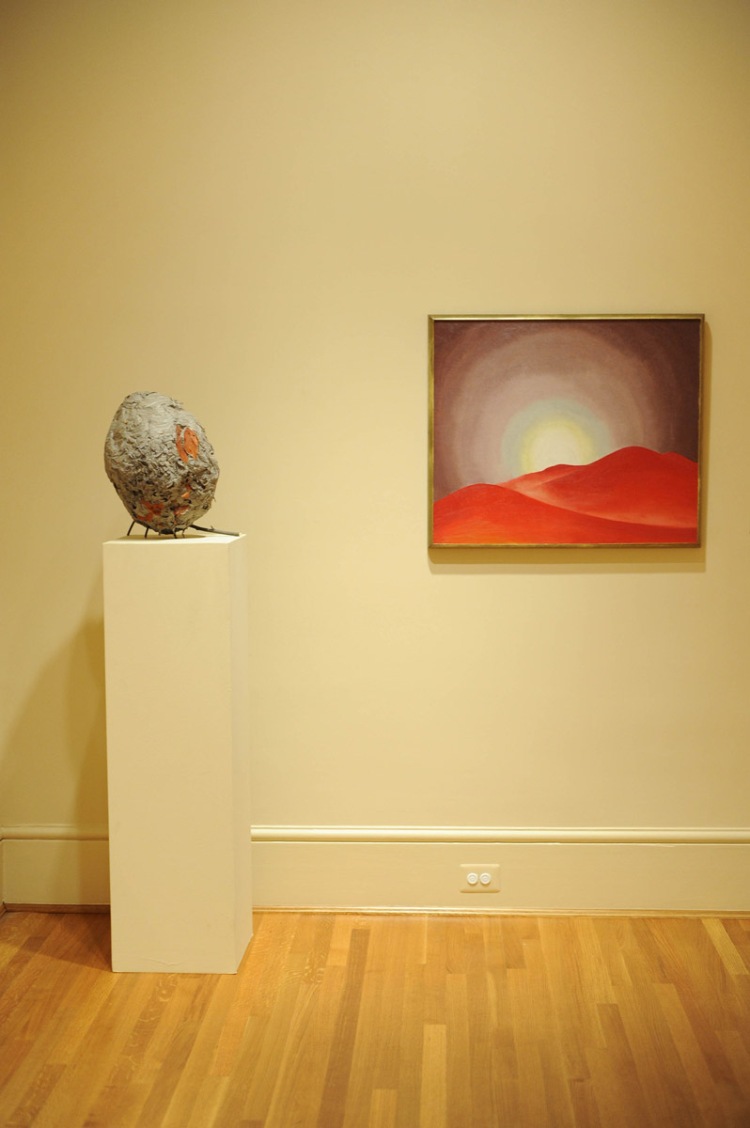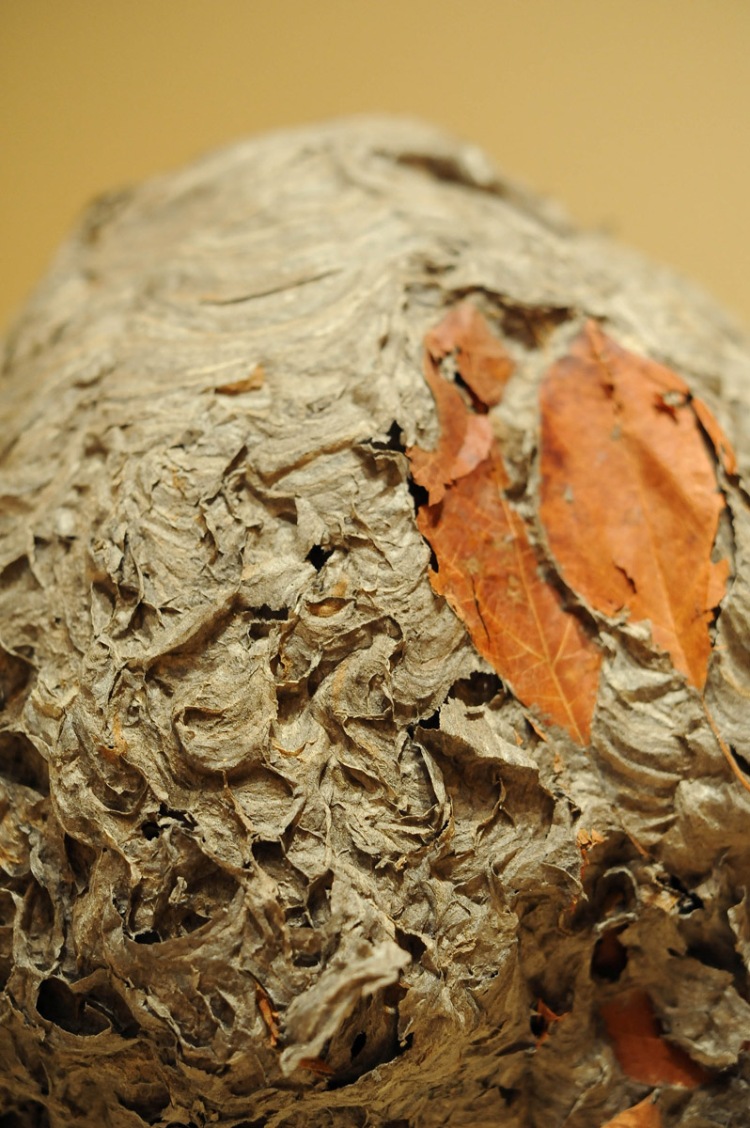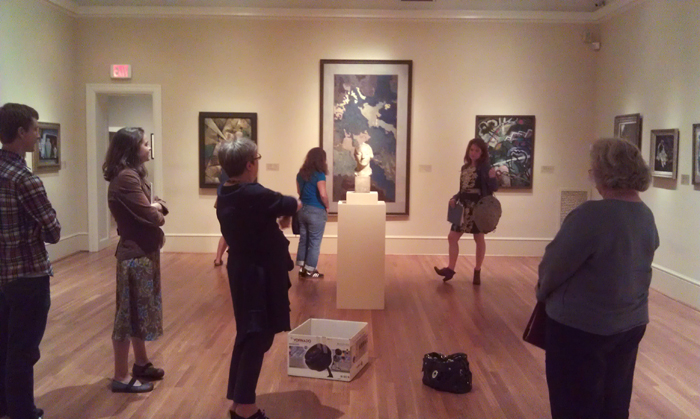
Hornet’s Nest with Georgia O’Keeffe’s Red Hills, Lake George (1927) in the Main Gallery. Photo: Joshua Navarro
This is the fourth in a series of posts from University of Virginia graduate student Tom Winters on his class’s experience installing works from our permanent collection in the Main Gallery. See parts one, two, and three.
Exciting new developments have taken place in our installation of the Main Gallery. Our hornet’s nest has now been suitably be-pedestaled and installed in one of the corners of our space, following deliberation over possible locations with Professor Turner last week. Now appropriately objectified and labeled, the hornet’s nest will henceforth be referred to as Hornet’s Nest. We are also delighted that Georgia O’Keeffe’s Red Hills, Lake George (1927) has joined our display. It replaces a Stuart Davis painting, though he is still represented with two other works in the gallery. O’Keeffe’s (artistic) relationship with Alfred Stieglitz–one of our main protagonists–makes her work an obvious inclusion in our ensemble; its quality makes it near essential.
Tom Winters, UVa graduate student, Department of Art History






